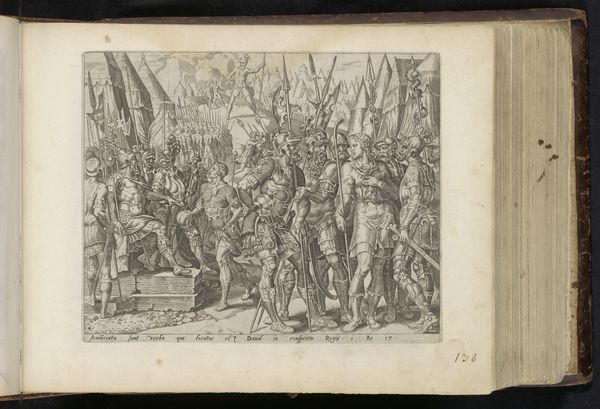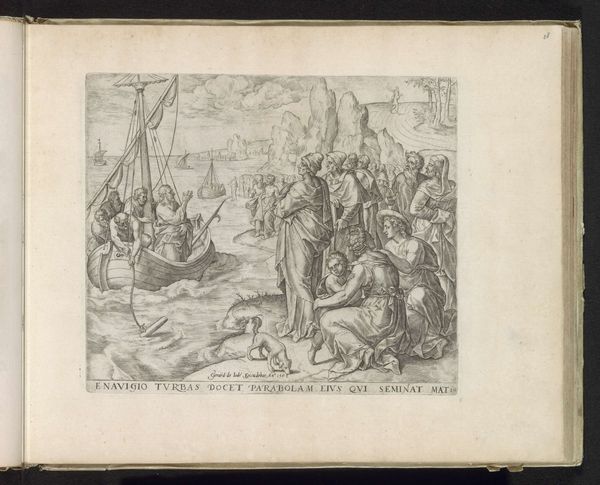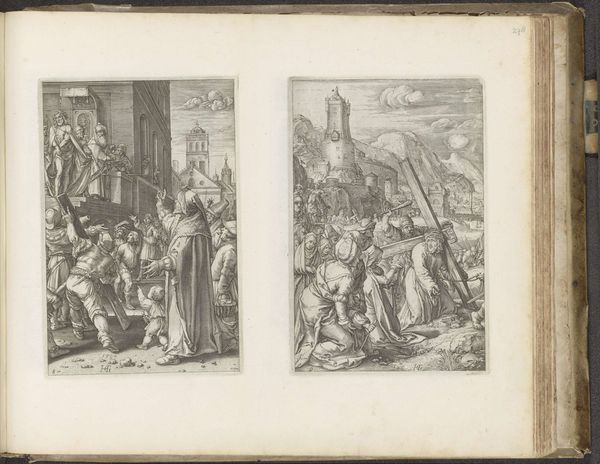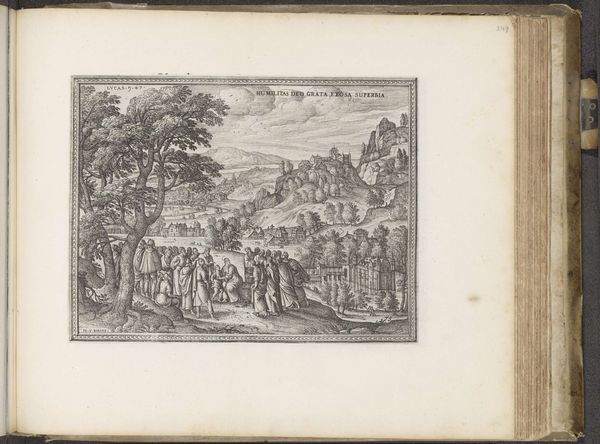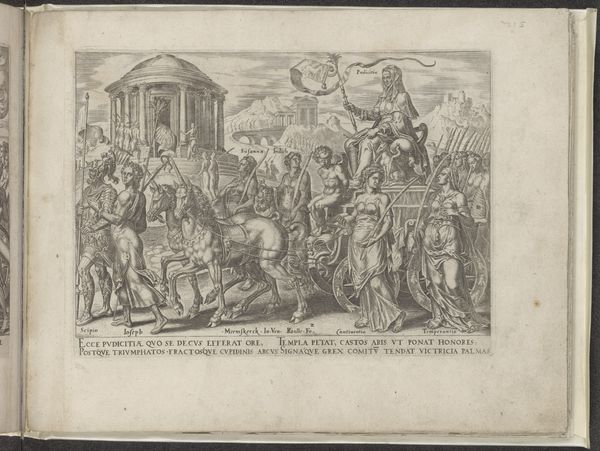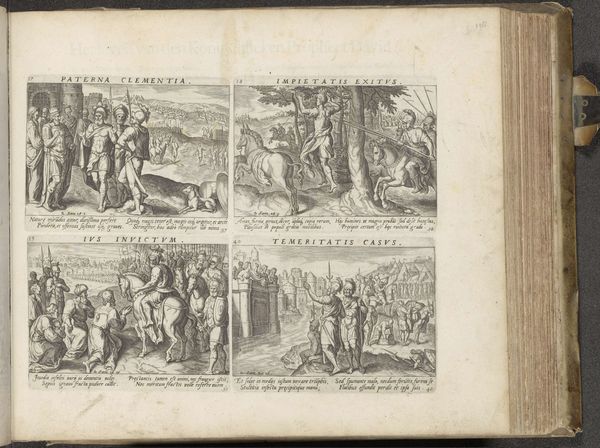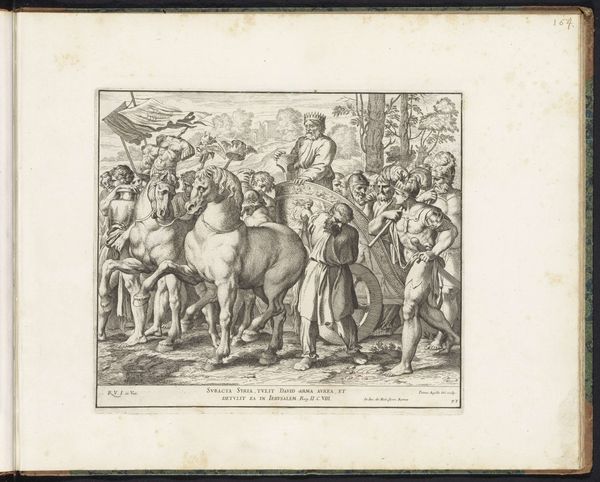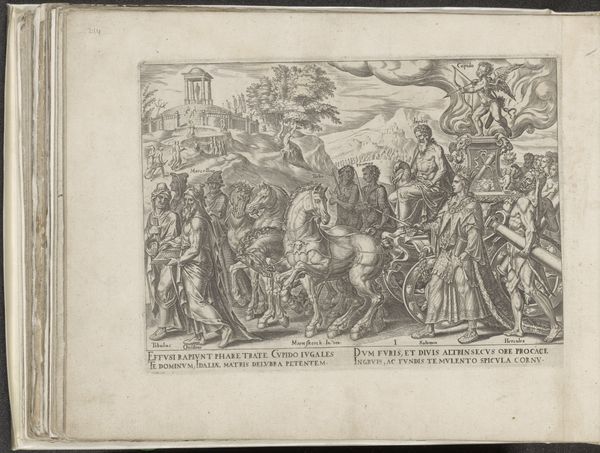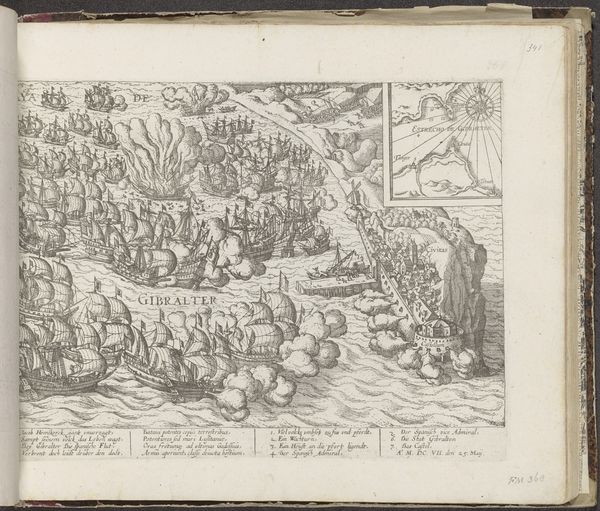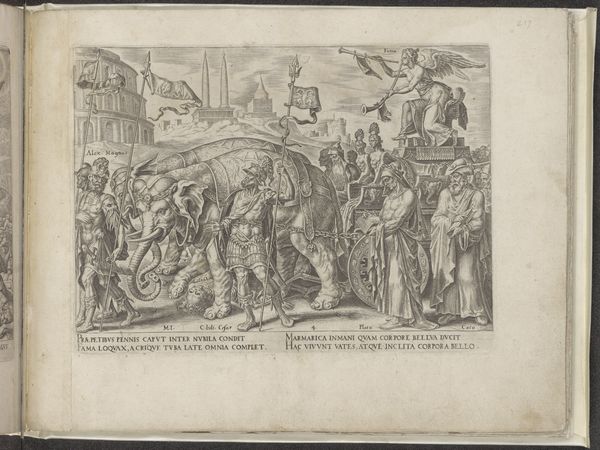
drawing, print, paper, ink, engraving
#
drawing
#
narrative-art
# print
#
figuration
#
paper
#
ink
#
history-painting
#
northern-renaissance
#
engraving
Dimensions: height 229 mm, width 243 mm
Copyright: Rijks Museum: Open Domain
Curator: At the Rijksmuseum, we're looking at "Crossing the River Jordan," an engraving rendered in ink on paper. The piece is attributed to the studio of Wierix, likely produced sometime between 1568 and 1654. Editor: The immediate impression is one of intense movement. There are figures milling about on both sides of the river bank, it feels tumultuous. It’s an incredible amount of detail for such a small work, every person seems to have been given great thought in its placement. Curator: Indeed. The artwork portrays the biblical narrative of the Israelites crossing the Jordan River, led by Joshua and carrying the Ark of the Covenant. Its symbolic resonance revolves around themes of liberation, faith, and divine promise. The river acts as a threshold, both physical and spiritual, to a new chapter. Editor: Right, the materiality here feels central. The sharp lines of the engraving, the painstaking layering of ink – they speak to a culture obsessed with precision and dissemination of knowledge. I wonder about the labour conditions in Wierix's studio and the social function of this print circulating back then. Curator: That’s interesting to think about. Beyond the surface depiction, though, the artwork highlights ideas about power structures present then and perhaps mirrored from antiquity: male figures are noticeably more prominent in the print as military and spiritual leaders—patriarchal authority is clear. And there is also an idea of how collective identities were formed. Editor: It's all there, embedded in the details. How these images reinforced the roles people played in a hierarchical society, from the rulers wielding the ark to the figures stooping down carrying materials over the rough terrain to cross. It is this interplay between the material realities and societal dynamics, then and now, which makes this engraving so powerful. Curator: Absolutely. “Crossing the River Jordan” offers not just a window into a specific biblical narrative, but it also allows us to ask key questions of labor and religious, class and gender dynamics within both its creation and continued circulation. Editor: Looking closely at these production aspects lets you see these intricate networks, of not just artist and the figures represented in the piece, but its engravers, distributers, and the audiences who eventually possessed such a small token to represent something much larger.
Comments
No comments
Be the first to comment and join the conversation on the ultimate creative platform.


